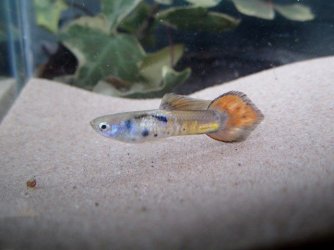fish48
Fish Gatherer
There are many ways of dealing with inbreeding for example keeping large Numbers outside in ponds is almost like a natural environment, when kept in large Numbers inbreeding of the fish are not a problem, the adult fish have more of a choice to pick from meaning that not all mattings will not be too closely related of brother to sister, also mattings among the different generations can only be good for the fish and can improve the gene pool, inbreeding can and do occur in the wild. Unrelated or related fish can sometimes produce weak or sick offspring, in the wild nature takes care of such problems there will always be Predatory fish or creatures that prey on the vulnerable its survival of the fittest.
in the home aquarium inbreeding can easily be controlled you can expect to get good healthy Guppies from inbreeding them, one method I use is to run to tanks of the same Guppies let them flock breed, once every few years mix from both tanks this method works very well, or select the best male and female to breed from,
Or simply run one tank let them flock breed and when or if needed remove any deformed or sick fish,
By using this simple guide inbreeding Guppies /is not problem, and just to mention Guppies are not to over breed and weakened by too much inbreeding continued inbreeding side of it as very little to do with the stat of some of Guppies/tropical fish that are sold these days. Many farm breed strains are weaker caused by incorrect use of antibiotics hormones and many other factors causing health problems,
Always breed or from good stock remove any weak sick or deformed fry/fish,
Soon I will post some picks of old strains of guppy’s/Livebearers that’s been around for many years,
in the home aquarium inbreeding can easily be controlled you can expect to get good healthy Guppies from inbreeding them, one method I use is to run to tanks of the same Guppies let them flock breed, once every few years mix from both tanks this method works very well, or select the best male and female to breed from,
Or simply run one tank let them flock breed and when or if needed remove any deformed or sick fish,
By using this simple guide inbreeding Guppies /is not problem, and just to mention Guppies are not to over breed and weakened by too much inbreeding continued inbreeding side of it as very little to do with the stat of some of Guppies/tropical fish that are sold these days. Many farm breed strains are weaker caused by incorrect use of antibiotics hormones and many other factors causing health problems,
Always breed or from good stock remove any weak sick or deformed fry/fish,
Soon I will post some picks of old strains of guppy’s/Livebearers that’s been around for many years,

 /www.xiphophorus.txstate.edu/about/introduction.html
/www.xiphophorus.txstate.edu/about/introduction.html
